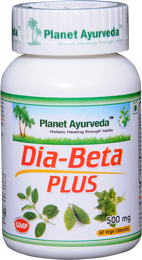How Do I Know if I Have Gestational Diabetes?
Gestational diabetes is a form of diabetes that develops during pregnancy. It occurs when your body cannot produce enough insulin to meet the increased needs during pregnancy, leading to elevated blood sugar levels.
Women at risk for diabetes should get tested — preferably before pregnancy, or as soon as they know they are pregnant. Since most birth defects happen within the first three to six weeks after conception, it’s important that diabetes be controlled even before you get pregnant.
However, most cases of gestational diabetes develop late in pregnancy and are diagnosed during routine screening tests at 24 to 28 weeks of pregnancy.
While some guidelines recommend screening only women at risk for gestational diabetes during pregnancy, most healthcare providers will likely suggest a glucose challenge test between the 24th and 28th week, even if you’re not considered at risk. For this test, you’ll drink a sugary solution containing 50 grams of sugar. One hour later, a blood sample will be taken to measure your blood sugar levels.
If your glucose challenge test comes out abnormally high (higher than 130 to 140 mg/dL), a follow-up test, called the glucose tolerance test, will be required.Prior to this test, specific dietary instructions may be provided, and an 8 to 12-hour fast is necessary. At the time of the test, you’ll first have your blood tested to determine your fasting blood sugar level. Then you’ll be given a drink containing exactly 100 grams of glucose. Your blood sugar will be tested one, two, and three hours later. The diagnosis of gestational diabetes is made if two or more values are abnormally elevated.
Treatment of Gestational Diabetes
Treatment of Gestational Diabetes involves managing blood sugar levels to ensure the health of both the mother and the baby. The primary goal is to keep blood glucose levels within the target range. Here are the common approaches used:
1. Dietary Changes
- A balanced, healthy diet is essential. Women with gestational diabetes are often advised to eat small, frequent meals to help regulate blood sugar levels.
- Emphasis is placed on consuming complex carbohydrates, lean proteins, healthy fats, and plenty of vegetables.
- Limiting sugary foods and refined carbs is key to managing glucose levels.
- Portion control and focusing on whole grains can help prevent spikes in blood sugar.
2. Exercise
- Regular physical activity, such as walking or prenatal yoga, can help lower blood sugar levels. It also improves insulin sensitivity and promotes overall health.
- Exercise should be discussed with a healthcare provider to ensure it is safe for the specific pregnancy.
3. Blood Sugar Monitoring
- Regular blood sugar monitoring is necessary to track levels and ensure they stay within the target range. This is usually done multiple times a day, such as before meals and after eating.
4. Frequent Checkups
- Regular doctor visits are necessary to monitor both the mother’s and baby’s health. This includes checking fetal growth, amniotic fluid levels, and monitoring for potential complications like high blood pressure or preeclampsia.
5. Postpartum Care
- After delivery, blood sugar levels typically return to normal. However, women who had gestational diabetes are at a higher risk of developing Type 2 diabetes later in life. Regular follow-up testing is recommended.
- It’s important for new mothers to maintain a healthy lifestyle to prevent the onset of Type 2 diabetes in the future.
Dia-Beta Plus – Effective Herbal Remedy to Control Sugar Level
This herbal blend, known as Dia-Beta Plus, works gradually. It will not cause an immediate drop in blood sugar or induce hypoglycemia. The effects are slow but consistent, and they can be monitored over time. As the treatment progresses, you may find it necessary to reduce the dosage of other diabetes medications, supplements, or herbs you are using.
Dia-beta plus is a blend of various herbs for diabetes, which are described in Ayurveda. The herbs not only help to control sugar levels but also help to rejuvenate overall health, Restore stamina and help combat fatigue. Dia-beta plus contains herbs like Karela (Momordica charantia), Tulsi (Ocimum sanctum), Gurmaar (Gymnema sylvestre), Saptrangi (Salacia chinensis) which are long know to have beneficial effects in diabetes.The herbs are not only good to control sugar levels but also excellent for preventing diabetic neuropathy.
This product has its roots in the Ayurveda-ancient herbal healthcare system of India . According to Ayurveda the balance of 3 energies- Vata, Pitta and Kapha (Kinetic, Thermal and Potential energy) in the body is a disease free state whereas their imbalance causes diseases. In Ayurveda, imbalance in “Vata” and “Kapha” is considered as the root cause of diabetes. Herbs in this formula control both “Vata” and “Kapha” and are thus good in controlling sugar levels.
Herbs in Dia-beta Plus
Dia-beta Plus is purely a herbal formulation without any chemicals added into it. The ingredients have been frequently used in the Ayurvedic system of medicine since 5,000 B.C. without any side effects. While there are numerous herbal products for diabetes, this one stands out by effectively controlling blood sugar levels without causing side effects or sharp fluctuations.
Ingredients of Dia-beta Plus:-
| S. No. | Herb Used | Latin Name | Quantity |
| 1. | Gurmaar | Gymnema sylvestre | 150 mg |
| 2 | Karela | Momordica charantia | 150 mg |
| 3. | Saptrangi | Salacia oblonga | 50 mg |
| 4. | Vijaysar | Pterocarpus marsupium | 50 mg |
| 5. | Ashwagandha | Withania somnifera | 50 mg |
| 6. | Tulsi | Ocimum tenuiflorum | 50 mg |
Ingredients of Dia-beta Plus:-
1. Gurmaar (Gymnema sylvestrae)
In Hindi language, Gurmaar means “The sugar killer”.It is an herb known for centuries in Ayurveda for its ability to regulate blood sugar levels. Recent studies show that it contains Gymnemic acid molecules responsible for its anti-diabetic action. They bind with glucose molecules in the intestines and inhibit their entry into the bloodstream. Thus it is effective in controlling sugar levels. This is a perfect herb for sugar control.
2. Karela (Momordica charantia)
It is commonly known as bitter gourd. It is very popular for it’s anti-diabetic properties. It’s also rich in micronutrients which are required for prevention of complications of diabetes. We have a juice form of momordica herb as well. Read more about our product Karela Saar The products like Diabeta plus, Karela Saar, Ashwagandha, Shilajit can all be used together to combat diabetes with herbal remedies.
3. Vijaysar (Pterocarpus marsupium)
Vijaysar is a large tree, and its bark has long been recognized for its effectiveness in managing diabetes. The bark is crafted into a wooden glass, which is often referred to as “The Miracle Cure for Diabetes.” To use it, water is placed in the wooden glass overnight and consumed by diabetic patients in the morning. The water changes to a brown color, and the glass is replaced after about a month when the water no longer changes color. Diabeta Plus contains the bark of this miraculous tree, enhancing its benefits for diabetes management.
4. Saptrangi (Salacia oblonga)
Salacia oblonga is an exceptional herb used in the management of diabetes. It is a tree whose bark is known for its powerful blood sugar-lowering effects. While it has gained significant attention in modern Western herbal practices, particularly due to its potent anti-diabetic properties, Salacia oblonga has been a cornerstone of Ayurvedic medicine for centuries. In Ayurveda, it is traditionally used to support healthy blood sugar levels and improve insulin sensitivity. Recent studies highlight that its active compounds, such as Salacinol and Kotalanol, help inhibit the enzymes responsible for breaking down carbohydrates, preventing blood sugar spikes after meals. This makes it an excellent natural remedy for managing Type 2 diabetes.
Dosage
For Non Insulin Dependent – 2 capsules twice daily, 1/2 hour before meals, with water.
For Insulin Dependent – 4-6 capsules twice daily, 1/2 hour before meals, with water.
To buy Dia-beta Plus, please visit store.planetayurveda.com/products/dia-beta-plus.
Other Supplements Good to Be Used with Diabeta Plus
Ashwagandha (Withania somnifera)
Ashwagandha is adaptogenic, relieves anxiety and stress. It is also an effective anti-inflammatory. Ashwagandha is a useful herb especially for diabetic neuropathy, weakness, fatigue and weight loss due to diabetes. It improves overall well being.
Tulsi (Ocimum sanctum)
It is popularly known as ‘The Holy Basil’ is a sacred plant according to Hindu mythology. People in India worship this plant as it has tremendous medicinal properties. Regular use of leaves of this plant controls blood sugar levels very effectively. It is also useful in many types of cancers, viral and bacterial infections, sore throat, cough and cold etc.
Diabeta Plus capsule contains effective Herbs for Diabetes control. It Controls Sugar Levels Naturally. The herbs for Sugar control are without any additives or preservatives.It can be very useful as an very effective herbal treatment for Diabetes.
A very useful and effective natural treatment for Diabetic Neuropathy. Although there are a lot of Herbal Products for Diabetes, but the unique combination of various herbs in Diabeta Plus has made it a very different and a very useful herbal product for diabetes.
Diabetic Neuropathy
Ashwagandha and Shilajit capsules are effective herbal supplements that can be used alongside Dia-Beta Plus to help manage diabetic neuropathy. This herbal combination has been shown to deliver quick results in addressing neuropathy symptoms. For optimal results, Ashwagandha is typically taken in 500 mg capsules, twice daily, to help combat diabetic neuropathy and other complications associated with diabetes. Both herbs work synergistically to reduce inflammation, improve circulation, and support nerve health, offering relief from the discomfort and pain often experienced by individuals with diabetic neuropathy.

